Discover five easy day trips from Paris. Explore French history, art, and culture with practical travel tips for each destination.
Paris is well connected to several historic and cultural sites, making it ideal for short, easy day trips. Within a 30 to 90-minute journey, travelers can explore palaces, medieval towns, cathedrals, and landscapes that shaped French history and art. These excursions from Paris are accessible by train or car, and they require no overnight stay. This article presents five practical and rewarding options for one-day outings, with clear information on travel times, costs, and what to expect on-site. Whether you’re interested in architecture, gardens, or regional specialties, these destinations provide a valuable extension to any stay in Paris.
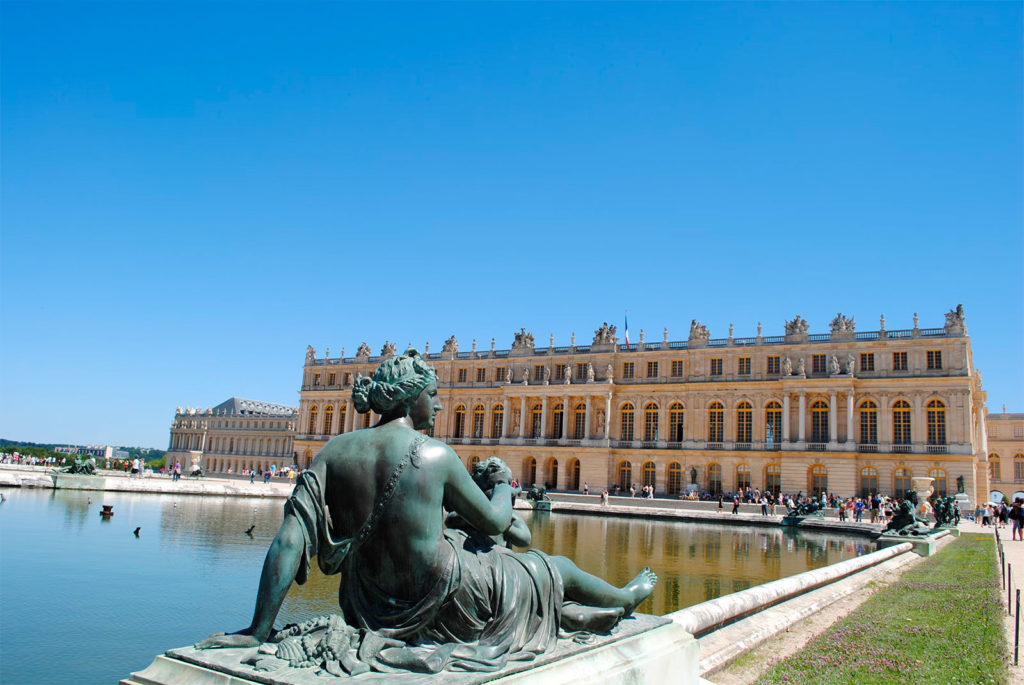
1. Versailles: Royal Grandeur Close to Paris
Distance from Paris: Approximately 20 km (12.4 miles)
Travel Time: 30–40 minutes by RER C or SNCF train
Cost: Around €7–€10 ($7.50–$10.70) round trip
The Palace of Versailles is one of the most visited historical sites in France. It can be reached easily from central Paris via the RER C line. The closest station is Versailles Château – Rive Gauche, located about 10 minutes on foot from the palace gates. Trains run every 15–20 minutes and the journey takes approximately 35 minutes.
Versailles served as the royal residence from 1682 under Louis XIV until the French Revolution. The main attraction is the Hall of Mirrors, a 73-meter gallery lined with 357 mirrors, chandeliers, and gilded sculptures. Visitors can also see the King’s and Queen’s Apartments, which feature restored furniture, tapestries, and personal belongings.
The palace grounds cover over 800 hectares, including the formal French gardens designed by André Le Nôtre. These are organized in geometric patterns with fountains, groves, and sculptures. Entry to the gardens is usually free except on days with special shows.
Two notable areas within the domain are the Grand Trianon, a pink marble palace used by Louis XIV as a retreat, and the Petit Trianon, closely associated with Marie Antoinette. Nearby, Marie Antoinette’s Hamlet features a reconstructed rustic village with a working farm and lake, used by the queen to escape court life.
Admission for the full estate (Palace, Trianon, Hamlet, and gardens) is €21 ($22.50), with optional audio guides available. On weekends from April to October, the Musical Fountain Show and Musical Gardens are offered, with a combined ticket priced at €28.50 ($30.50). It’s advisable to book tickets online to avoid queues, especially during high season. Guided tours are available for an additional fee.
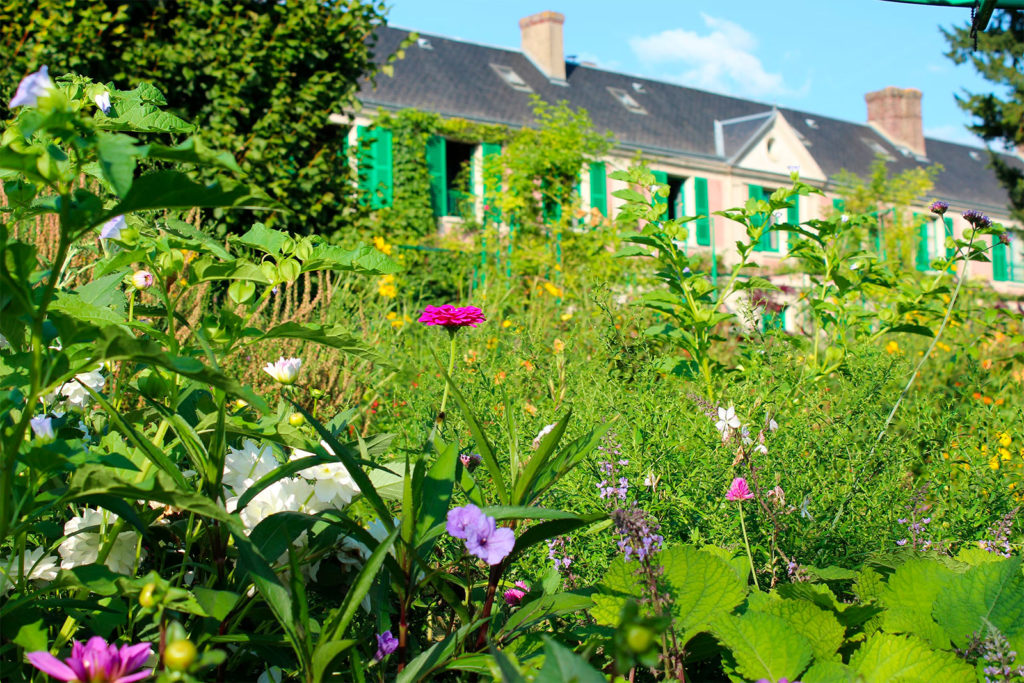
2. Giverny: Monet’s Artistic Retreat
Distance from Paris: Approximately 75 km (46.6 miles)
Travel Time: 45 minutes by train to Vernon, then 15 minutes by shuttle or taxi
Cost: Train fare around €15–€20 ($16–$21) one way
Giverny is a small village in Normandy, famous worldwide as the residence of Claude Monet, one of the founders of French Impressionism. Located about 75 km northwest of Paris, Giverny can be reached by taking a direct train from Paris Saint-Lazare to Vernon-Giverny station, which takes approximately 45 minutes. From there, a shuttle bus (€10 round trip), taxi (€15–€20), or rented bicycle (available near the station) covers the final 6 km to the village.
The Fondation Claude Monet manages the painter’s home and gardens, where visitors can walk through the same scenery that inspired some of Monet’s most celebrated works, including Water Lilies and The Japanese Bridge. The property is divided into two main areas:
- The Clos Normand is the front garden, filled with rows of seasonal flowers such as tulips, irises, and dahlias. The layout is informal and colorful, designed by Monet himself.
- The Water Garden, located across the road via an underground passage, features the iconic Japanese bridge covered in wisteria, along with bamboo, weeping willows, and a pond filled with water lilies.
The house interior is preserved with period furniture, Monet’s bedroom and studio, and a large collection of Japanese prints.
The site is open daily from late March to early November, typically from 9:30 a.m. to 6:00 p.m. Entry costs €11 ($11.80) for adults. Booking tickets online is recommended, particularly during weekends and holidays when the site becomes busy. Note that large bags are not allowed inside. Nearby, the Musée des Impressionnismes offers additional context and rotating exhibitions on the Impressionist movement.
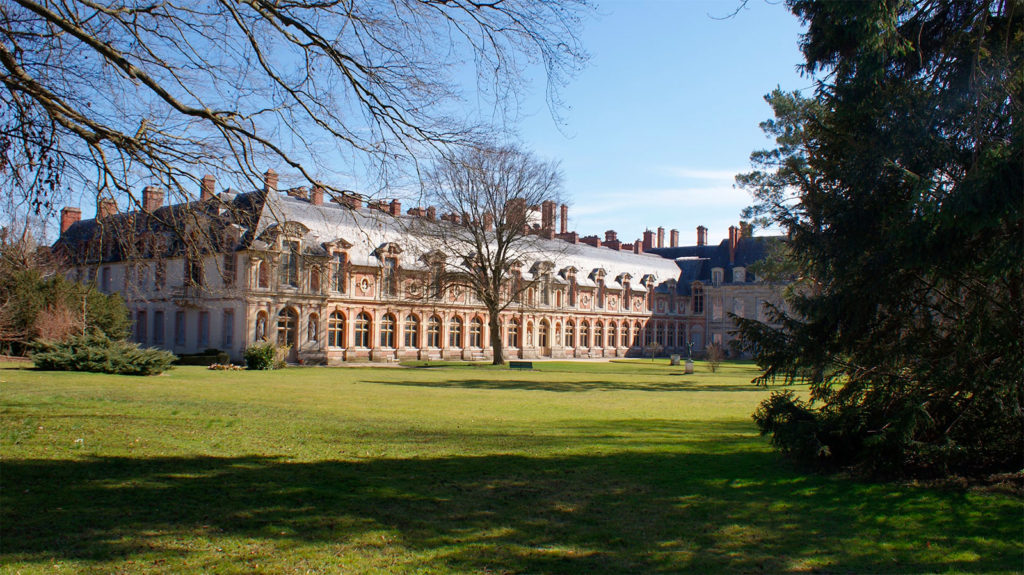
3. Fontainebleau: A Blend of History and Nature
Distance from Paris: Approximately 70 km (43.5 miles)
Travel Time: 40 minutes by train from Gare de Lyon
Cost: Train fare around €8–€10 ($8.50–$10.70) one way
Fontainebleau is a practical and culturally rich day trip from Paris, combining architecture, imperial history, and outdoor leisure. Trains depart frequently from Gare de Lyon to Fontainebleau-Avon station, with a journey time of around 40 minutes. From the station, local buses (line 1, €2) or a 15-minute walk will take you directly to the château entrance.
The Château de Fontainebleau was continuously inhabited by French monarchs from the 12th century through to Napoleon III. Unlike Versailles, which reflects a specific period, Fontainebleau evolved over centuries and showcases Renaissance, Baroque, and Neoclassical styles.
Highlights inside the château include:
- The Francis I Gallery, an early example of Renaissance interior decoration in France.
- The Throne Room, the only preserved throne of Napoleon I in its original location.
- The Royal Apartments, richly decorated with period furniture and tapestries.
- The Papal Apartment, where Pope Pius VII was held during Napoleon’s reign.
The château is surrounded by 130 hectares of gardens and parks, including the Grand Parterre, the largest formal garden in Europe designed by André Le Nôtre, and the English Garden, with winding paths and natural landscaping.
The entrance fee is €13 ($14) for adults. Admission includes access to the château and most of the gardens. Audio guides and guided tours are available at extra cost.
Fontainebleau is also known for the Forêt de Fontainebleau, a vast former royal hunting ground now popular for hiking, bouldering, and cycling. Trails begin near the château and are accessible without a car. Visitors looking to balance cultural exploration with outdoor activities will find Fontainebleau a convenient and rewarding choice.
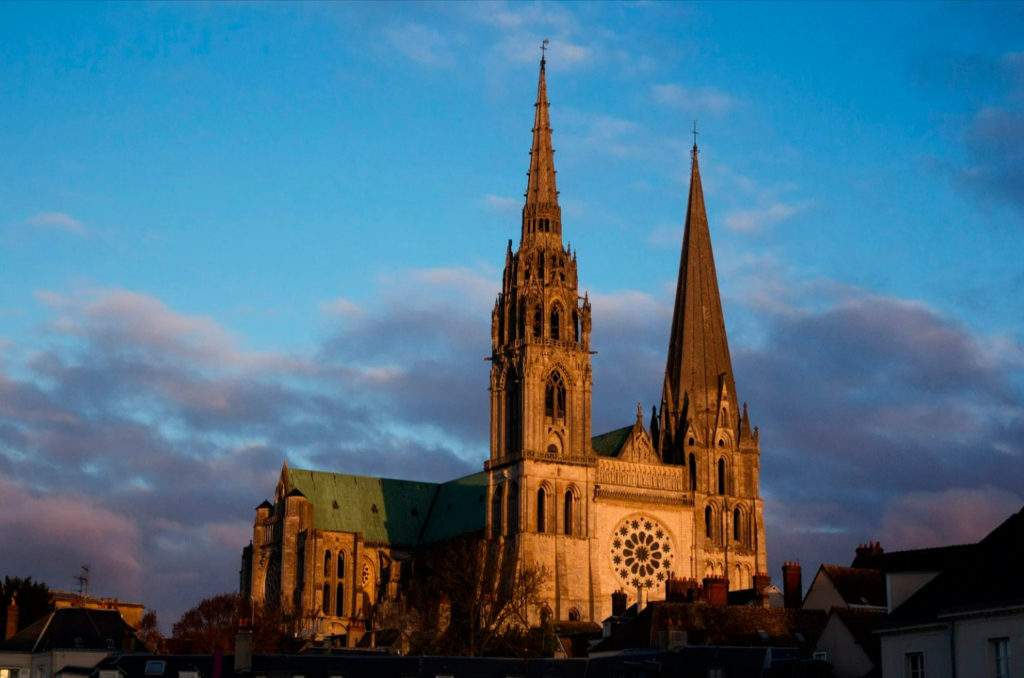
4. Chartres: Gothic Architecture and Stained Glass
Distance from Paris: Approximately 90 km (56 miles)
Travel Time: 1 hour by train from Gare Montparnasse
Cost: Train fare around €16–€20 ($17–$21) one way
Chartres is a historic city in the Centre-Val de Loire region, renowned for its cathedral, one of the best-preserved examples of Gothic architecture in Europe. It can be reached from Paris in about one hour by direct train from Gare Montparnasse. Trains run regularly throughout the day. From Chartres train station, it is a 5-minute walk to the cathedral.
The Cathédrale Notre-Dame de Chartres was mostly built between 1194 and 1250. It was designated a UNESCO World Heritage Site in 1979 due to its architectural significance and state of conservation. The cathedral is notable for its asymmetrical spires, labyrinth, and over 2,600 square meters of stained glass, including the famous Blue Virgin window. More than 150 original stained-glass windows survive, most dating from the 12th and 13th centuries. These windows depict biblical scenes and everyday medieval life, offering insight into religious teaching methods before widespread literacy.
The cathedral’s north and south porches are decorated with sculpted figures illustrating the Old and New Testaments. Inside, the crypt, one of the largest in France, and the choir screen, a late Gothic addition, are also worth seeing.
Admission to the cathedral is free, including most of the interior areas. The crypt and tower require a separate ticket, with guided tours available in English and French for around €7 ($7.50). Audio guides can be rented on-site.
From April to October, the city hosts Chartres en Lumières, a nighttime light show where the cathedral and 20 other buildings are illuminated with colorful projections. The event is free and starts after sunset.
Visitors can also explore the old town, with its timber-framed houses, narrow alleys, and small museums, all within walking distance.
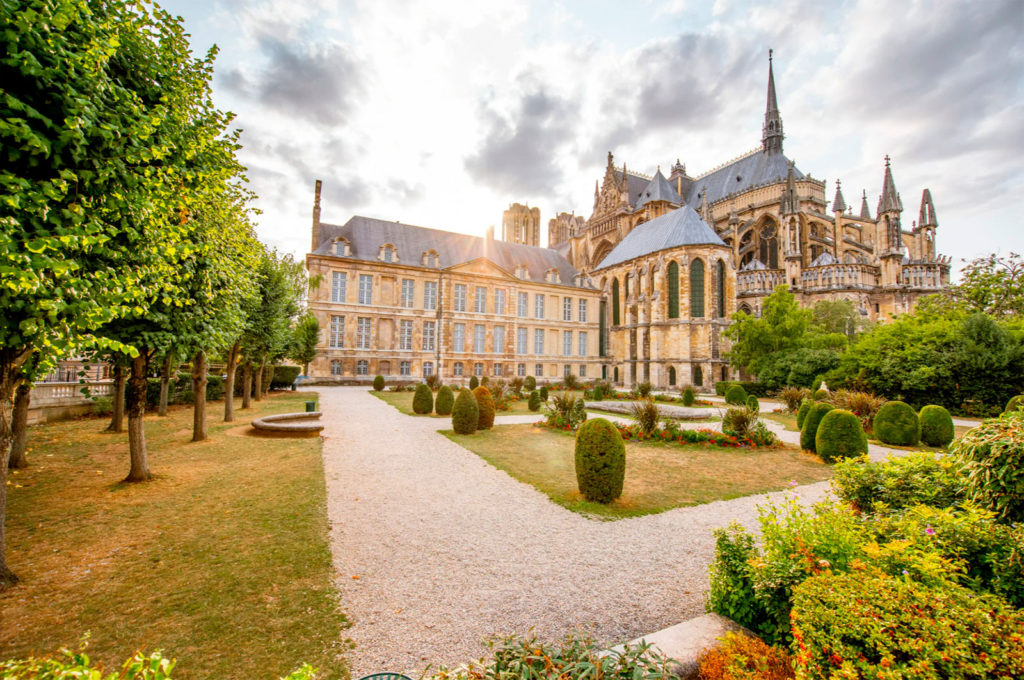
5. Reims: Champagne and Coronation History
Distance from Paris: Approximately 130 km (81 miles)
Travel Time: 45 minutes by TGV from Gare de l’Est
Cost: Train fare around €25–€40 ($27–$43) one way
Reims is a historic city in the Grand Est region, accessible in under an hour by TGV from Paris Gare de l’Est. Trains run frequently, and booking tickets early often results in lower fares. From Reims station, the city center and main attractions are within a 15-minute walk.
The Cathédrale Notre-Dame de Reims is one of the most important Gothic buildings in France. Construction began in 1211, and the cathedral was used for the coronation of French kings from the 13th century until Charles X in 1825. The building features an intricate façade with over 2,300 statues, including the famous Smiling Angel. Inside, visitors can see stained glass windows by artists such as Marc Chagall, and the impressive height of the nave (38 meters).
Admission to the cathedral is free, and it is open daily. Guided tours, including access to the towers, are available for an additional fee (around €7–€9, or $7.50–$9.60). The Palais du Tau, the former archbishop’s palace and site of coronation banquets, is located next door. Entry is €8 ($8.50).
Reims is also a key hub for Champagne production, with numerous historic maisons offering cellar visits and tastings. Major producers like Veuve Clicquot, Taittinger, and Pommery provide guided tours explaining the méthode champenoise, the traditional process used to make Champagne. Prices for tours with tastings start around €25 ($27) and vary based on the number and type of cuvées sampled. Advance booking is essential, particularly on weekends and during harvest season (September–October).
In addition to its heritage, Reims offers a compact and walkable city center, with Roman ruins, Art Deco architecture, and quality restaurants where local cuisine pairs well with Champagne.
Practical Tips:
- Train Tickets: Purchase tickets in advance through the SNCF website or app to secure the best prices.
- Opening Hours: Check official websites for current opening times and any seasonal variations.
- Guided Tours: Consider joining a guided tour for in-depth information and convenient transportation.
These destinations offer a diverse glimpse into France’s rich cultural heritage, all within a day’s reach from Paris.
XperienceFrance is your travel specialist in France.
